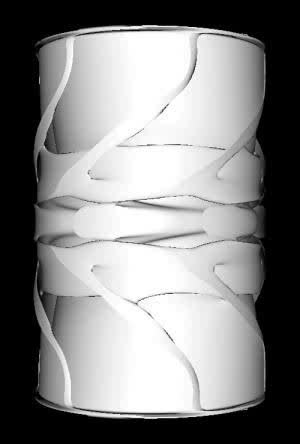


| (a) Γ=6, Re=1800 | (b) Γ=3, Re=2500 | (c) Γ=2.6, Re=2600 |
 |
 |
 |
Numerical simulations of flow between two cylinders rotating at the same constant angular speed. The top and bottom endwalls of the annular container are held stationary. For low Reynolds numbers Re, the flow is axisymmetric, steady and essentially confined to the (Bödewadt) endwall boundary layers. At sufficiently large Re, rotating waves emerge via supercritical Hopf bifurcations. Depending on the distance between endwalls, &Gamma, three distinct modes of instability arise. These are shown in the movies: (a) rotaing wave with wavenumber m=3 at &Gamma=6 and Re=1800 (corresponding to Fig. 7 in the paper), (b) m=2 at &Gamma=3 and Re=2500 (Fig. 9) and (c) m=15 at &Gamma=2.6 and Re=2600 (Fig. 11).